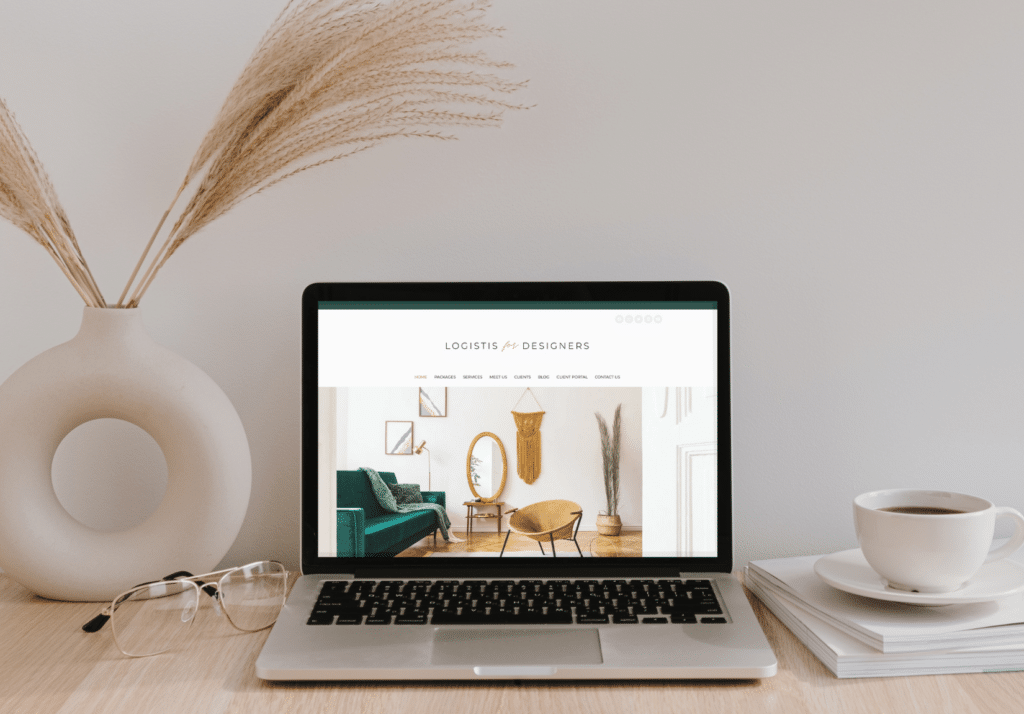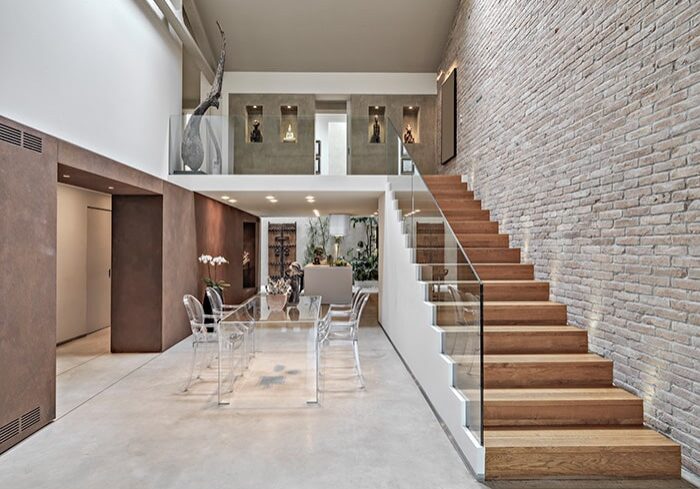Have you ever walked into a showroom with bare walls and empty pedestals? As an interior designer, you’d never dream of presenting your talents without visual proof of your skills. Yet many talented designers do exactly that online by skipping a professional website. Your digital presence is your 24/7 portfolio, client relationship manager, and business development tool all in one.
When potential clients search for interior design services, they’re looking for someone who can transform their vision into reality. Without a website, you’re essentially invisible to many of these prospects. While social media platforms offer some visibility, they simply can’t deliver the professional credibility, control, and long-term stability that comes with having your own website.
In this guide, we’ll look at why a professional website isn’t just a luxury for interior designers. It’s an essential business investment that directly impacts your client acquisition, project quality, and bottom line. Let’s uncover how you can create a digital showcase that captures your unique design aesthetic while driving real business results.

Beyond Social Media
Social media platforms like Instagram and Pinterest are fantastic for showcasing your portfolio and connecting with potential clients. But relying solely on these platforms is like building your business on rented land. It’s subject to algorithm changes, platform policies, and limited control over how your work is presented.
You Need to Control Your Narrative
When someone searches for your interior design business online, what will they find? Without a website, you leave your professional reputation to chance. Client reviews, competitor information, or outdated listings might be the first impression potential clients receive.
Social Media Platforms Change Their Rules
Remember when Instagram suddenly shifted its algorithm? Many designers who had built strong followings saw their engagement drop overnight. Social platforms can change their policies, algorithms, or business models at any time, potentially leaving your business visibility in jeopardy.
Even more concerning, account suspensions happen more frequently than you might think. If your Instagram or Facebook account were suspended, would potential clients have another way to find and contact you?
Websites Build Professional Credibility
Interior design is a significant investment for your clients. They want reassurance that they’re hiring a true professional. A well-designed website signals legitimacy and professionalism in ways that social media profiles simply cannot.
“When we’re helping interior designers build and run profitable firms, one of the first things we advise is investing in a professional website,” explains Emilie Sheaffer of Logistis For Designers. “It’s often the difference between attracting bargain-hunting clients and those willing to invest in quality design services.”
Your Website Works While You Sleep
Unlike social media, which requires constant posting to stay visible, your website works around the clock to attract potential clients through search engines. When someone searches “interior designer in [your city]” at midnight, your website can be there to capture that interest. No hashtags or daily posts required.
Must-Have Features For Your Website
Creating an effective website isn’t just about having a beautiful homepage. The most successful interior designer websites include specific elements that convert visitors into clients.
The Heart of Your Website
Your portfolio is undoubtedly the most critical element of your website. This is where potential clients will decide if your aesthetic aligns with their vision.
When creating your portfolio, consider these best practices:
- Organize projects by category: Residential, commercial, specific rooms, or design styles
- Showcase before and after transformations: These powerfully demonstrate your impact
- Include detailed project descriptions: Explain your process, challenges, and solutions
- Use professional photography: High-quality images are non-negotiable in this visual profession
- Update regularly: Feature your newest and best work prominently
Remember that quality trumps quantity. Ten stunning projects presented beautifully will make a stronger impression than thirty mediocre examples.
Client Testimonials and Social Proof
Potential clients want reassurance that working with you will be a positive experience. Testimonials provide that crucial social proof.
When featuring testimonials:
- Include the client’s full name and location when possible
- Use specific quotes that highlight different aspects of your service
- Consider adding the client’s photo or a shot of the completed project
- Include testimonials throughout your site, not just on a dedicated page
- Update regularly with your newest happy clients
Services and Process Pages
Transparency about your services and process reduces potential client anxiety and pre-qualifies leads before they contact you.
Your services page should clearly outline:
- What specific design services you offer
- What each service includes
- What the client can expect at each stage
- Your pricing structure or starting points
- How your services can be customized
The process page should walk potential clients through your typical workflow:
- Initial consultation
- Concept development
- Design presentation
- Implementation
- Final reveal and follow-up
An About Page That Connects
Your About page is where potential clients decide if they want to work with you, not just your portfolio. This page should build a personal connection while establishing your credentials.
Effective About pages include:
- Your design philosophy and approach
- Your professional background and credentials
- Personal elements that make you relatable
- Your “why”—what drives your passion for design
- Professional headshots that convey your personality
Your About page might seem secondary to your portfolio, but it’s often the page that converts visitors to clients. People hire designers they feel they can trust and work with closely.
Content Planning Tips
Creating a website isn’t a one-time project. It requires ongoing content development to attract and engage potential clients.
Blog Content That Showcases Your Expertise
A blog offers multiple benefits for interior designers:
- Improves your website’s search visibility
- Establishes you as an expert in your field
- Provides valuable resources for potential clients
- Creates shareable content for social media
Effective blog topics for interior designers include:
- Design trend analyses
- Room-by-room guides
- Before and after showcases with detailed descriptions
- Product recommendations and reviews
- Design tips for specific challenges (small spaces, awkward layouts, etc.)
When clients ask me common questions, turn your answers into blog posts. Now you can share in-depth responses and reach people with similar questions through search engines.
Visual Content That Captivates
As an interior designer, your website should be a visual feast. Invest in:
- Professional photography of your projects
- Lifestyle images that evoke the feeling of your designs
- Video walkthroughs of completed projects
- Designer sketches and concept boards (with client permission)
- Behind-the-scenes glimpses of your process
Remember to optimize all images for web use to ensure fast loading times. Large, uncompressed images can significantly slow down your website, frustrating potential clients.
Lead Generation Content
Your website should actively work to convert visitors into leads. Consider creating:
- Style quizzes that help potential clients define their aesthetic
- Downloadable design guides (offered in exchange for email signup)
- Room planning worksheets
- Design trend reports
- Budget planning tools
These resources provide value to potential clients while helping you build an email list for ongoing marketing.
Technical Considerations
The technical foundation of your website impacts both user experience and search engine visibility.
Platform Selection
Choosing the right platform for your website is crucial. Options include:
- WordPress: Highly customizable with robust features, though it requires more technical knowledge or professional help.
- Squarespace: User-friendly with beautiful templates designed for creative professionals.
- Wix: Simple to use with drag-and-drop functionality, though somewhat limited in advanced features.
- Shopify: Ideal if you sell physical products along with your design services.
For most interior designers, Squarespace offers the best balance of beautiful design, portfolio functionality, and ease of use. If you’re planning to sell products online or need very specific functionality, WordPress may be worth the steeper learning curve.
Mobile Optimization
More than 60% of website visits now come from mobile devices. Your website must look stunning and function perfectly on smartphones and tablets.
Key mobile considerations include:
- Touch-friendly navigation
- Fast loading times
- Readable text without zooming
- Properly sized buttons and forms
- Images that resize appropriately
Test your website on multiple devices before launch, and regularly check the mobile experience as you add new content.
SEO Fundamentals for Interior Designers
Search Engine Optimization (SEO) helps potential clients find your website when they search for interior design services.
Local SEO is particularly important for designers, as most clients look for designers in their specific area. To optimize for local searches:
- Include your city and service areas on your website
- Create location-specific content (e.g., “Modern Kitchen Design Trends in Austin”)
- Make sure your business information is consistent across all online platforms
- Set up and optimize your Google Business Profile
- Collect and display reviews
Beyond local SEO, you should focus on:
- Using descriptive file names and alt text for portfolio images
- Creating content around relevant keywords
- Ensuring fast site loading speeds
- Building quality backlinks from design publications and directories
How To Design Your Website To Generate More Leads
A beautiful website alone won’t generate business. You need a strategic approach to convert visitors into design clients.
Understanding Your Client Journey
Map out how potential clients discover and hire interior designers:
- Recognition of a need (home purchase, renovation desire, etc.)
- Initial research (searching online, asking friends)
- Comparing options (visiting multiple websites, reading reviews)
- Contacting selected designers for consultations
- Making a hiring decision
Your website should address potential clients at each stage with appropriate content and calls to action.
Strategic Calls-to-Action
Every page on your website should include a clear next step for visitors. Effective calls-to-action for interior designers include:
- “Book a consultation” buttons
- “View my portfolio” links
- “Download my style guide” offers
- “See the transformation” project showcase links
- “Let’s discuss your project” contact prompts
Place these CTAs strategically throughout your content, and make them visually distinct so they catch the visitor’s eye.
Analytics and Improvement
Install Google Analytics or a similar tool to track how visitors interact with your website. Pay attention to:
- Which pages receive the most traffic
- Where visitors spend the most time
- Which pages have the highest exit rates
- Which CTAs generate the most conversions
- How visitors find your website
Use these insights to continuously improve your website. For example, if visitors frequently leave from your contact page, it might be too complicated or asking for too much information.
Website Mistakes That Could Be Costing You Clients
Even the most talented designers can make mistakes when creating their websites. Here are the most common pitfalls and how to avoid them:
Prioritizing Style Over Usability
As designers, it’s tempting to create a website that showcases your artistic vision through unusual navigation or cutting-edge design elements. However, if visitors can’t easily find what they’re looking for, they’ll leave.
Make sure your website has:
- Clear, intuitive navigation
- Standard placement for key elements
- Obvious contact information
- Fast loading times
- Easy-to-read text
Neglecting Clear Service and Pricing Information
Many designers avoid mentioning prices on their websites, fearing it will scare away potential clients. However, vague service descriptions and completely hidden pricing can waste your time with unqualified leads.
While you don’t need to publish an exact price list, providing starting points or price ranges helps pre-qualify potential clients. For example, “Full-service design projects usually begin at $X” gives visitors a frame of reference.
Weak or Hidden Contact Information
Make it incredibly easy for potential clients to contact you. Include:
- A prominent contact button in your main navigation
- Your phone number and email in your header or footer
- Contact forms on multiple pages
- Links to your social media profiles
- Your physical location if you have a studio
Remember that some visitors may be ready to reach out immediately, while others need more information first. Accommodate both types of prospects.
What’s Next?
As you consider creating or updating your website, remember that the goal isn’t just to have an online presence. It’s to create a strategic business tool that directly contributes to your firm’s growth and profitability.
Ready to transform your online presence? Contact us to discuss how we can help you optimize your interior design business finances, including smart investments in your digital presence. And don’t forget to download our free guide on ways to build a profitable design business for more strategies to grow your design firm.
FAQs
How much should an interior designer spend on a website?
Most professional interior designers see the best results with an investment of $3,000-$8,000 for a custom website, though quality template-based sites can be created for under $1,000.
Do I really need my own website if I have a strong Instagram following?
Yes. Social media platforms can change algorithms or policies at any time, potentially leaving you without access to your audience. Your website gives you full control over your online presence.
How often should I update my interior design website?
Portfolio updates should happen at least quarterly, while blog content should be added monthly for optimal search visibility. Full website redesigns are typically needed every 3-5 years.
Can I create a professional website myself, or should I hire a developer?
With platforms like Squarespace and Wix, designers with basic technical skills can create professional-looking websites. However, professional developers bring expertise in user experience and conversion optimization that often delivers better results.
What’s the most important element of an interior designer’s website?
Your portfolio is the most critical element, followed closely by clear service descriptions and strong calls-to-action that guide potential clients to contact you.
How do I know if my website is actually working?
Track key metrics like visitor numbers, time on site, inquiry form submissions, consultation bookings, and actual projects secured from website leads. Ask every new client how they found you.
Do interior designers need to blog on their websites?
While not strictly necessary, regular blogging significantly improves your search visibility and positions you as an expert in your field. Even 1-2 high-quality posts per month can make a difference.
Should I include pricing on my interior design website?
Including starting points or investment ranges helps pre-qualify leads. Complete transparency isn’t necessary, but some pricing guidance prevents wasted time with clients whose budgets don’t align with your services.
How can I make my website stand out from other interior designers?
Focus on your unique design philosophy, specialized expertise, and client experience rather than trying to compete with visual gimmicks. Authentic storytelling and consistent high-quality imagery create more memorable impressions than trendy design elements.
What’s the biggest mistake interior designers make with their websites?
Prioritizing artistic expression over usability and lead generation. Your website should be beautiful, but its primary purpose is to convert visitors into clients, not to showcase your most experimental design concepts.
Share On:



